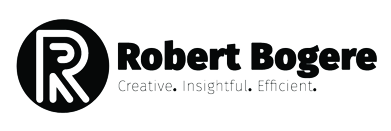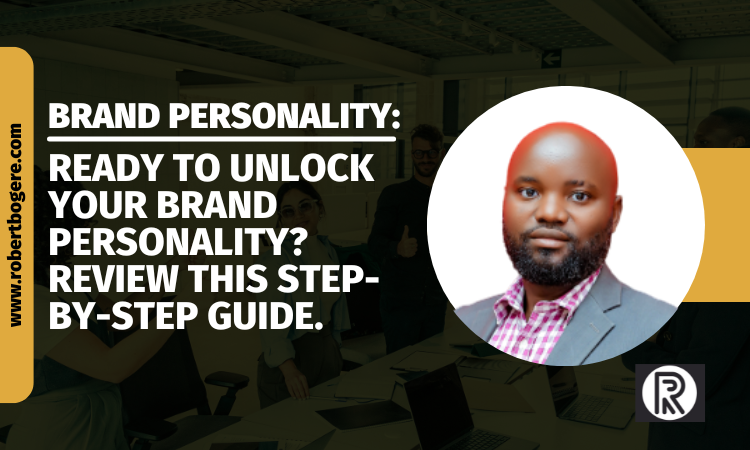Last Updated on Mon-Sep-2024 by Robert Bogere
Are your brand goals realistic to drive brand success?
Imagine being in the middle of these forests—the Black Forest in southwestern Germany, the Australian temperate forest, the Amazon Basin in Brazil, the Taiga forest, and the Tongass National Forest in the United States.
Each forest is thick with unseen things. Without a map, your journey through these forests would be full of obstacles. Imagine having a proper direction, routes, and milestones well marked?
Your journey becomes structured, more clear, and goal achievable. This brings importance to brand objectives and goals for small businesses.
The map, compass, milestones, brand objectives, and goals offer guidance, direction, and checkpoints for your movement.
These transform the concept of branding into a solid strategy that drives brand growth and success.
In this today’s post, we’ll observe brand objectives and goals, their importance, and how to create them to ensure your brand doesn’t just make it but succeeds with purpose and clarity. Join me as I take you through this. shall we Chief?
Discover: The effective types of brand positioning strategies you use to unlock your brand.
- What are brand objectives?
- What are brand goals?
- Why Brand Objectives and Goals?
- Elements Of Brand Objectives, OKRs, and Goals
- 5 Major Brand Goals
- Writing your brand objectives
- Writing your Brand OKRs (Objectives and Key Results)
- Setting your brand goals
- Examples of Brand Objectives, OKRs, and Goals
- Free Brand Goal Offer
- Brand objectives and goals conclusion
What are brand objectives?
Brand objectives are high-level, broad goals stating what your brand aims to achieve over a period of time.

They provide direction for all your brand activities, helping you align efforts with your overall brand vision and mission. These objectives are important for guiding decisions and measuring brand success.
What are brand goals?
Brand goals are specific step-by-step milestones contributing to achieving your broader branding objectives. They’re detailed and measurable, offering a roadmap for your brand growth.

Without brand goals, you’re planning to fail and may struggle with getting good results in your branding activities. Before setting your brand goals, what do you want to achieve with your branding?
What action do you want from your target customers? There should be a goal behind every action you take on with your brand.
Why Brand Objectives and Goals?
1/ They offer a direction for your brand, helping you prioritize your efforts and money.
2/ Your brand goals offer benchmarks to evaluate the goodness of your brand strategies and activities.
3/ Well defined brand goals align your team’s productivity towards company targets, fostering a sense of purpose and motivation.
4/ Brand objectives help your team in making informed decisions and adapting to changes in the market.
Elements Of Brand Objectives, OKRs, and Goals
1/ Clarity
You have to define what you want to achieve. Always you need to avoid vague statements (Let them be specific).
Use a common local language for everyone to understand your objectives (They should be simple).

Focus on impactful brand objectives rather than having many but with low impact (You should focus on what matters). Get focused on what you want to achieve.
2/ Align with your brand Vision and Mission
Your brand objectives should support your long-term brand vision and mission. Each of your goal should contribute to a bigger purpose of your brand.
3/ Important to your Business Context
Your brand objectives should be pertinent to current business challenges, issues, struggles, and opportunities. Look out for market trends, customer needs, and competition.
4/ Measurable and trackable
You need to find out metrics to measure your brand progress and success. You can use both quantitative and qualitative indicators though these are somehow generic to you out there.
5/ Achievable
You need to have realistic and attainable brand goals. Find available resources for instance time, budget, etc.
6/ Time bound
You’ve to set deadlines to create a sense of scarcity and focus. My favorite way of doing it is using short-term and long-term timeframes.
Discover: The best practices of keeping your brand consistent across your touch points.
5 Major Brand Goals
As Kandy Sandel puts it, they’re 5 major brand goals your brand should focus on as below;
1/ Brand Awareness
2/ Motivating a purchase
3/ Differentiating your offering
4/ Creating credibility and trust
5/ Creating an emotional connection
Let’s go through these chap chap.
1/ Brand Awareness
If you set your goal as brand awareness, it means you want to increase your brand recognition.

This way, you want to reach as many people. With brand awareness, your target customers can recall, recognize, and remember your brand after observing it a few times.
2/ Motivating a purchase
This brand goal motivates a potential buyer and gives him/her a reason to purchase. It can be for an existing business that has been in presence for quite long.
3/ Differentiating your offering
This means identifying your brand positioning angle to stand out from ruthless competitors. Questions to think of;
1/ Is it what your brand stands for?
2/ Is it the reason why you started your business?
When you’ve identified a unique positioning angle, you’ll need to use it in your brand messaging.
Your would-be target customers would like to see your offering as unique and different from other brands.
4/ Creating credibility and trust
With brand credibility and trust, you want to look professional and appeal to your would-be target customers.

You’ll need to network with others in person. You can use social media platforms for instance X, LinkedIn, plus other ways. When you do this, you’re building trust.
5/ Creating an emotional appeal
Your best emotional appeal is through telling stories that resonate with your would be customers. Think of your Why? I started my personal online business to gain freedom and work on projects that I feel I want.

Wherever I’ll share this story, people who want back their freedom will relate with it and would like to connect with me. And that’s the aim of this brand goal.
Writing your brand objectives
Brand objectives should be broad, high impact statements defining what you want to achieve. They’re the starting point upon which your brand goals and OKRs are built. Here’s how I write my objectives;
1/ Know your brand Vision and Mission
Your brand vision is the goal you want to achieve. Think of the Golden Circle of Simon Sinek. Your brand mission states a purpose of your brand and how you plan to achieve your vision. You need to ensure your brand objectives relate with your brand vision and mission.
2/ Identify your focus areas
Determine the top areas where your brand wants to grow. Common areas would include brand awareness, customer loyalty, market share, and product/service quality. Your focus should be on what matters.
3/ Writing your brand objective
You’ll need to use an easy language to explain your objective. Think of Increasing brand awareness in the local market of Edmonton, Alberta, Canada. This is objective is spot on and targets a particular market.
Discover: The analyzed good UVP examples of some global brands.
Writing your Brand OKRs (Objectives and Key Results)
Brand OKRs are a goal-setting framework that helps your company focus its efforts on important issues throughout. They consist of an objective and 2-5 key target results that measure progress towards your overall objective. My favorite way of writing these;
A. Define your brand objective
Your objective is a qualitative goal describing what your brand wants to achieve like improving your online presence.
B. Identify your key results
After you write your qualitative goal, create your key results within it. These should be specific and measurable outcomes defining success for your brand objective.
Let’s maintain our brand objective of Improving your online presence. Your key results for such objective would be;
1/ Increasing your website traffic by 30% within 1/2 a year.
2/ Achieving a 20% engagement rate on your social media posts.
3/ Publishing 4 guest blog posts on reputable industry websites. With this, you need more networking.
My best way of doing this, is using SMART framework.
1/ Define your result (Be specific).
2/ Quantify your outcome (Let it be measurable).
3/ Realistic as always (Achievable).
4/ Align it with your objective (It should be relevant).
5/ Set your deadlines (Time-bound).
C. Review and improve
Always, you’ll need a link between your brand objective and the key results. Revisit it periodically to adjust based on your brand progress.
Setting your brand goals
Brand goals should be your specific actions contributing to achieving your brand objectives. They are your steps driving your brand strategy forward. My way of doing it;
1/ Split your brand objectives into goals
Divide bigger objectives into smaller manageable tasks. When you do this, it becomes easier to achieve your set objectives.
Let’s look at a new brand objective of launching a new social media campaign for any brand. Your brand goal would be developing a content calendar with engaging social posts.
2/ Write all steps to achieve your goals
Write down the actions needed to accomplish each brand goal. This would be developing a content calendar.
Steps needed to achieve the above goal would be;
1/ Identifying your target customer preferences.
2/ Brainstorming your content ideas. You can do this with ChatGpt.
3/ Scheduling your posts and allocating particular money to every task.
4/ Lastly, tracking your brand campaign performance weekly.
3/ Allocate responsibilities and set timelines
You need allocate tasks to your team members and set deadlines. This way, you’re ensuring accountability and track progress.
Examples of Brand Objectives, OKRs, and Goals
I always want to walk to the talk to my readers to understand what I talk about, here’re some examples of written brand objectives, OKRs, and goals.
Your brand objective would be increasing brand awareness in the West London. Your key results will be;
1/ Achieving a 20-30% increase in local media mentions within 6 months.
2/ Gaining your social media followers by 25% within your 1st quarter.
3/ Organizing 3 online community events in the year 2025 in West London.
Let’s look at your brand goals
1/ Coming up with your local media outreach plan.
2/ Writing engaging social media content focused of your local audience of West London.
3/ Planning and implementing community events with targeted promotions.
On the side of your brand objective, you can plan for improving your customer loyalty Your brand objective can be improving customer loyalty and retention.
This way, your key results would be;
1/ Increasing your repeat purchases by 20% within your 1st quarter.
2/ Achieving your customer satisfaction score by 77% in 2024.
3/ Putting in place a customer loyalty program and enrolling 2200 loyal customers within 3 months.
And then your brand goals would be set like this;
1/ Designing and launching a customer loyalty program within quarter 1.
2/ Conducting your customer satisfaction surveys and analyzing their feedback.
3/ Developing specific marketing campaigns for your loyal customers.
Our third example of brand objective is expanding market share. You can think of expanding your market share in two (2) new geographic local regions of Edmonton, Alberta.
Your set key results would be as below;
1/ Entering 2 new geographic markets and achieve a 10% market share within 12 months. This way, you need a lot of work.
2/ Developing brand partnerships with (6) local distributors in each 2 regions. 3 distributors in each region. You got that?
3/ Launching local positioning campaigns or activities to a 20% increase in your brand recognition.
From the above, you’ll need to think of your brand goals as;
1/ Conducting market research to find opportunities in 2 new regions.
2/ Negotiating agreements with (6) six local distributors in the Edmonton.
3/ Developing and executing targeted strategies for each selected region.
Let’s look at our last example here. This is improving your product in terms its quality. Your set key results should be;
1/ Reducing your product return rates by 25% through improved control processes within 1/2 a year.
2/ Achieving a defect rate of less than 1% in your product production.
3/ Introducing a new quality assurance system and training of new staff within 8 months.
Then your brand goals for the objective will be;
1/ Reviewing and updating your quality control procedures.
2/ Carrying out training sessions for new production staff on new improved standards.
3/ Monitor on going defect rates and return data to find areas where to improve.
Free Brand Goal Offer
Thank you for reading up to this end. You’re a real chief. If you’re ready, get a Free 30-Minute discovery call on writing your brand Objectives, OKRs, and Goals
1/ Get clarity on your brand direction with expert guidance.
2/ Discover steps to achieve your particular business goals.
3/ Set your brand objectives with your brand vision and mission for brand growth.
Don’t let your brand get lost. Develop a journey to brand success. You can book your free consultation here today.
Brand objectives and goals conclusion
Setting your brand objectives and goals, you’re building a link between over 3 rivers. Without these 3 elements, you risk being taken away unpredictable currents of market trends and ruthless competitors.
But with defined brand objectives and goals, you’re building a structure which can stand all challenges but also guides you to your last destination.
Take a story of a startup with a vision to revolutionize environment friendly products.
Setting its brand objectives on sustainability and market penetration, and writing these down into achievable goals, the business cannot only survive but succeed and become a giant in its market.
Your brand, too, can have such a story. Setting your brand objectives and goals, your every step is purposeful and milestones celebrated, leading you closer to reaching your vision.
Branding success is not a matter of chance but planned and executed steps that bring your brand story to life.




